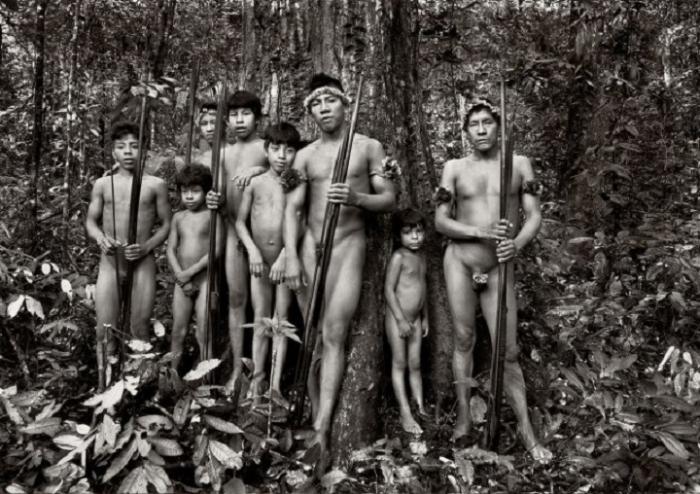Venezuela’s recent bullying actions against petro-power-in-the-making Guyana calls to mind the saying plus ça change plus c’est la même chose (the more things change, the more they remain the same). Why so, you may ask? This is because the recent intimidation efforts do not represent the first, or second, or third time that the South American republic with the world’s largest proven oil reserves has demonstrated willingness to be the neighborhood bully. Indeed, they crafted an Intimidation Playbook that dates back to the late-1960s.
This two-part series addresses four relevant questions. What exactly is the latest bullying attempt? What explains this latest Playbook effort? What are some earlier Playbook pursuits? Finally, can Venezuela be made to stop the bullying? This first article deals with the first two queries, and the forthcoming one examines the third and fourth questions.
The latest bullying move.
Venezuela’s latest bullying attempt has two aspects; one from the presidency, and the other from the legislature. The former is a statement issued by the foreign ministry on September 19, last that is pregnant with arrogance and belligerence. Among other things, the statement declared: “The Bolivarian Republic of Venezuela strongly rejects the illegal bidding round for oil blocks currently being carried out by the Government of the Cooperative Republic of Guyana since it intends to have maritime areas pending delimitation between both countries.”
Pushing the envelope of arrogance further, the communique, which was sanctioned by President Nicolás Maduro, contended that “the Government of Guyana does not have sovereign rights over these maritime areas and consequently any action within their limits is in violation of international law, as long as they are not carried out through an agreement with Venezuela.” Moreover, the missive asserted that Venezuela “reiterates that any illicit and arbitrary concession that Guyana grants, has granted or intends to grant in the areas in question is unacceptable and violates its sovereign rights, and warns that these actions do not generate any type of rights for third parties to participate in this process.” Understandably, the Venezuelan posture evoked swift and firm repudiation by Guyana. The OAS, the United States, CARICOM, and the Commonwealth Secretariat also denounced Venezuela’s position.
Venezuelan authorities felt obliged to go further, though. So, two days after the communique was issued, the country’s National Assembly approved a resolution to hold a “consultative referendum” intended to “allow the Venezuelan people to express their views on a significant territorial dispute – Venezuela’s claim over the Essequibo territories.” Jorge Rodríguez, president of the National Assembly, argued that the referendum would provide an opportunity for Venezuelans to “demonstrate and reiterate their commitment to defending the Essequibo in the face of attempts to violate the integrity of the national territory.”
Interestingly, the legislative action was partly a response to the strong response by the United States to the September 19 communique. Indeed, in his September 23rd speech to the United Nations General Assembly, Foreign Minister Yvan Gil explained: “Two days ago, Venezuela’s National Assembly unanimously decided to call our people to vote in a consultative referendum to ratify the defense of our sovereign territory against the aggressions of the American empire, which wants to lead us to a war for natural resources.” All this begs the question: what prompted this action by the two branches of the Venezuelan government?
What Explains the Latest Move?
Venezuela’s latest bullying move comes in the wake of another recent step by Guyana in its journey along the corridors of petro power—the announcement of the winners of Guyana’s first-ever auction of some of its oilfields, 14 blocks, ranging from about 1,000 square kilometers to 3,000 square kilometers, with the majority of them being close to 2,000 square kilometers. The inaugural oil auction closed on September 12. Eight of the 14 blocks, 11 in shallow water and three in deep water, received bids from six groups of companies.
Bids were submitted from individual companies and joint ventures from several countries the world over. They included Total Energies EP Guyana B.V, Qatar Energy International E&P LLC, & Petronas E&P Overseas Ventures SDN BHD (Malaysia); Delcorp Inc – Guyana, Watad Energy, Arabian Drillers (Saudia Arabia); Exxon Mobil Guyana Limited, HESS New Ventures Exploration Limited, and CNOOC Petroleum Guyana Limited; Liberty Petroleum Corporation (USA) and, Cybele Energy Limited (Ghana); Sispro Inc. (Guyana); and lastly International Group Investment Inc. (Guyana), in joint venture with Montego Energy SA (London).
The announcement of the outcome of the auction bid round represented another successful step along the country’s petro power journey. This past September Minister Deodat Indar provided a window into the republic’s petro power trajectory, indicating that by the end of this year the country’s production will stand at 600,000 barrels of oil per day, and that by the end of 2027 it is projected to reach 1.3 million barrels per day, generated by an anticipated seven Floating Production Storage and Offloading (FPSO) vessels. Venezuela recognizes this progress and projection for what they are—phenomenal and incredibly lucrative—and its expansionist impulse, first publicly exposed in 1975 by the late Dr. Eric Williams, then Prime Minister of oil-and-gas-rich Trinidad and Tobago at a convention of the ruling People’s National Movement, compels it to continue its campaign for the resource-rich Essequibo, which amounts to 74 percent of Guyana.
Yet, this latest bullying episode comes out of a hefty Intimidation Playbook, and on the eve of the 124th anniversary of the 1899 Arbitral Award, which is October 3. In the next article we shall examine a few of the entries in the Playbook and ponder whether Venezuela can be made to end its intimidation of its smaller and weaker neighbor.
Ivelaw Lloyd Griffith, a former Vice Chancellor of the University of Guyana, is a Senior Associate with the Center for Strategic and International Studies as well as a Fellow of the Caribbean Policy Consortium and of Global Americans. His next book, Challenged Sovereignty: The Impact of Drugs, Crime, Terrorism, and Cyber Threats in the Caribbean, will soon be published by the University of Illinois Press.





